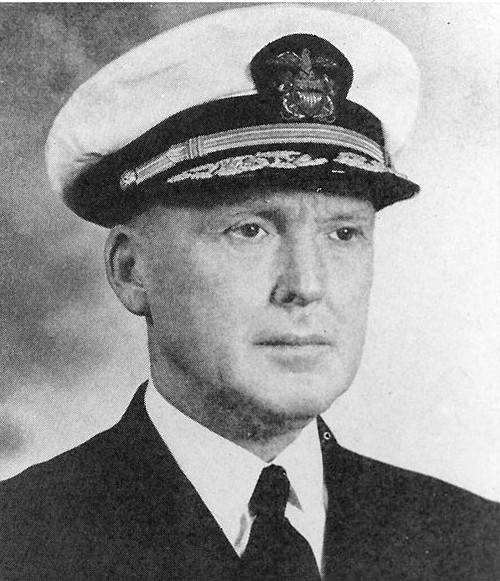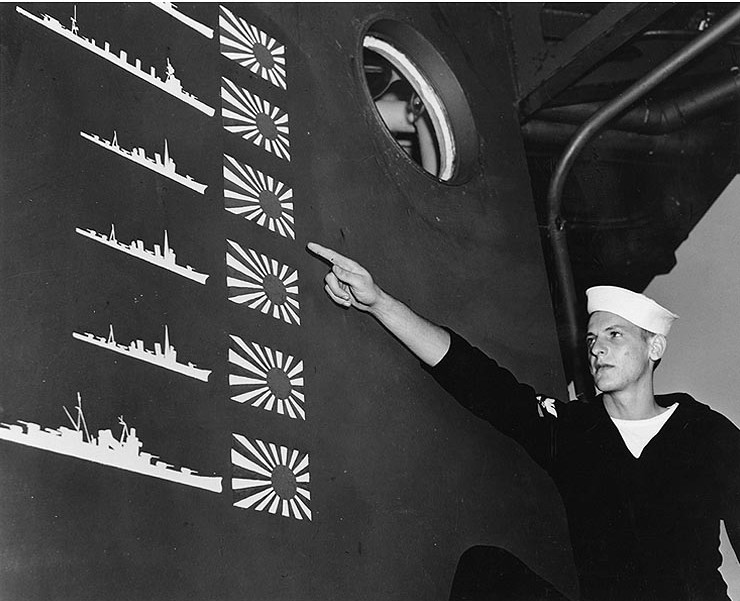The Battle of Cape Esperance

Rear Admiral Norman Scott, victor of the Battle of Cape Esperance
Today marks the 70th anniversary of the start of the Battle of Cape Esperance, the second major naval battle to occur at night during the Guadalcanal campaign. Although strategically unimportant, the American victory at Cape Esperance proved to be a much needed morale boost for the US Navy.
Prior to the Battle of Cape Esperance, the Imperial Japanese Navy was the uncontested master of the water around Guadalcanal at night. Japanese ships used the cover of darkness to bring supplies and reinforcements to the men struggling to recapture Henderson Field from American soldiers and marines. These resupply runs, known as the “Tokyo Express” frequently included bombardments of Henderson Field by Japanese cruisers and destroyers.
After two months of uninterrupted trips to Guadalcanal, the Japanese had grown complacent. And so it was that on the night of 11-12 October 1942, a Japanese bombardment force of three heavy cruisers and two destroyers was ambushed by an American task force under Rear Admiral Norman Scott.
Scott’s force of four cruisers and five destroyers first spotted the Japanese warships at 11:43 p.m. on the 11th. The Japanese commander mistakenly believed that the unidentified ships were a Japanese resupply convoy, so he ordered his ships to turn on their recognition lights. Immediately after the lights went on, the Japanese ships were deluged by American shells. What followed was nearly forty minutes of chaos as both sides fired at shell flashes and launched torpedoes in the darkness.

USS Boise’s scoreboard, which claims six Japanese ships sunk at Cape Esperance. In reality, only five Japanese ships fought at Cape Esperance, and only two of those were sunk.
The Japanese cruiser Furutaka and the destroyer Fubuki were sunk, and the cruisers Aoba and Kinugasa were damaged during the battle. On the American side, the USS Duncan DD-485 was sunk, and the USS USS Salt Lake City CA-25, USS Boise CL-47, and USS Farenholt DD-491 were all damaged.
Tactically, the Battle of Cape Esperance was an American victory. The Japanese bombardment force was turned back after suffering major damage. Strategically though, Cape Esperance was a minor victory at best. Although Scott’s force bought Henderson Field one night’s reprieve from bombardment, he did not stop the Tokyo Express. In fact, a Japanese reinforcement convoy landed troops and supplies on Guadalcanal while the battle raged. However, the Battle of Cape Esperance provided a critical morale boost for the US Navy when it was desperately needed. Norman Scott and the ships under his command put the first dent in the Imperial Navy’s seemingly impenetrable armor 70 years ago today.
Posted by Curator Eric Rivet
- Posted :
- Post Category :
- Tags : Tags: Guadalcanal, Navy, Pacific
- Follow responses to this entry through the RSS 2.0 feed. You can skip to the end and leave a response. Pinging is currently not allowed.




Leave a Reply